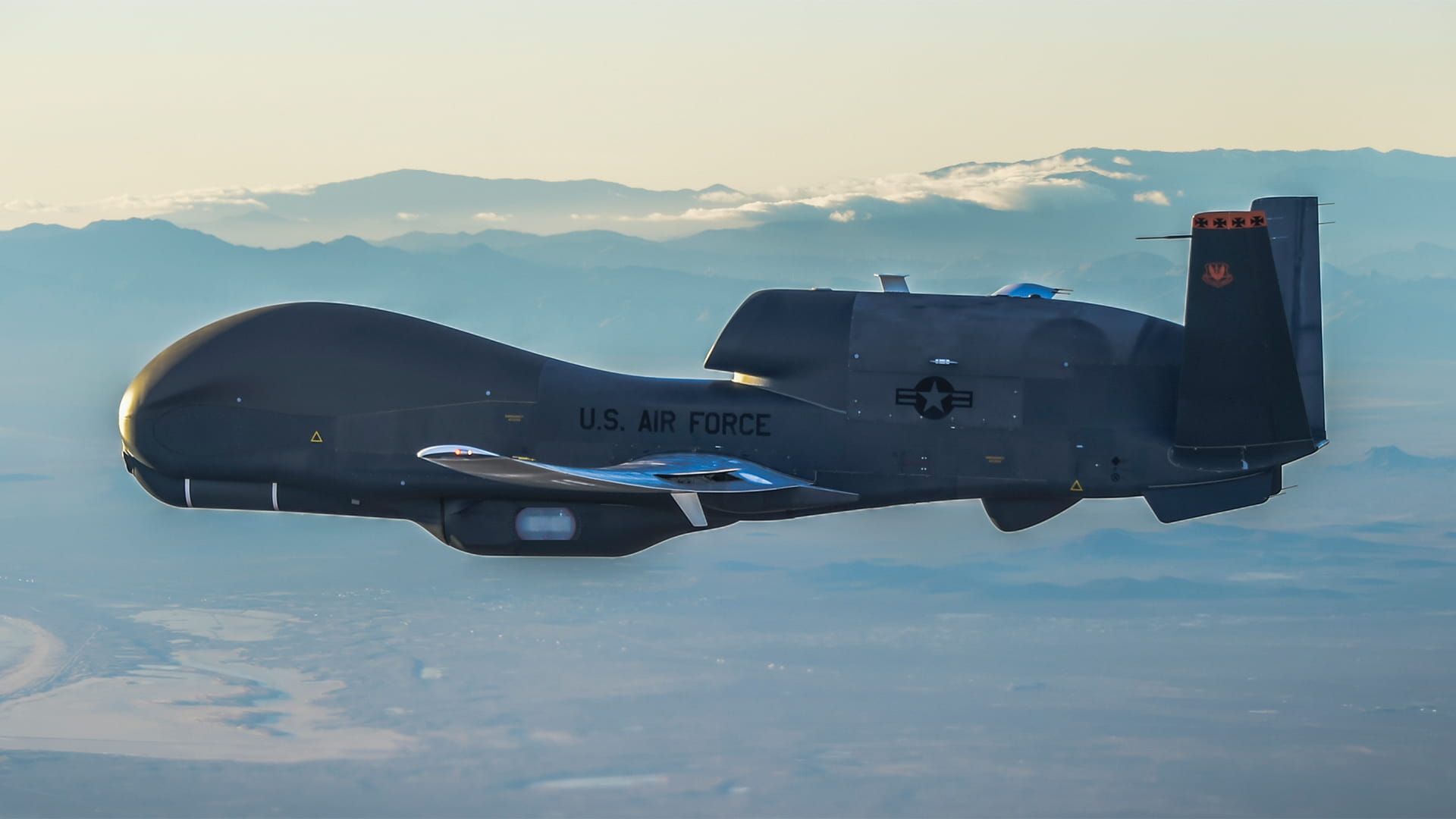Because of our reputation as a broad product and subsystem provider, customers come to Collins Aerospace for all of their UAS needs, mitigating the time, risk and expense of having to manage multiple suppliers. By working with Collins, you can be assured of a proven partner offering subsystems that have been in operational use for well over 1 million flight hours.
Drawing upon our avionics expertise, we bring enhanced situational awareness, surveillance, navigation and communications to unmanned systems in some of the world's toughest environments. Our systems also assist federal, state and municipal agencies with law enforcement, severe weather research, fire management and other applications in which pilot safety and mission demands prohibit manned aircraft. From advanced flight control, navigation, communication, and sensors to fully integrated open architecture systems and a worldwide support network, our rugged, flexible solutions provide a low cost of ownership and enable mission success.
Flight controls / autopilot
Our Athena® family of INS/GPS/ADAHRS and autopilot/flight control systems provides a variety of integrated, miniaturized and affordable packages in single-string, triplex and quad-redundant configurations. All Athena units provide an optional flight-control software module, which implements a complete set of autopilots for a variety of fixed-wing, rotary-wing, and ducted-fan vehicles. The autopilots provide fully autonomous 3D way-point navigation, airspeed and attitude tracking, enforcement of flight envelope constraints, autonomous takeoff and landing, as well as ground control during taxiing, where applicable.
In addition, our Piccolo™ flight management systems are highly integrated autopilot systems in a small, inexpensive package. They provide complete, off-the-shelf solutions, such as the core autopilot, flight sensors, navigation, wireless communication and payload interfaces.
Navigation and guidance
Our guidance and control systems are flying onboard more than twenty types of unmanned aircraft systems (UAS) and we have two decades of UAS integration expertise. The Collins Athena product family is used to provide advanced integrated flight control systems and sensor suites for aerial, marine and ground navigation systems. These reliable solutions incorporate a full suite of control and guidance sensors integrated into a compact package that is designed to operate in a wide range of demanding temperature, shock and vibration environments. This small packaging results in a simplified avionics architecture and facilitates easy installation and maintenance.
Our new SAASM Real-Time Kinematic GPS receiver is the first in the industry to provide unmanned aircraft systems with centimeter-level GPS navigation accuracy and SAASM security.
Mission computers
We provide several open and scalable mission computers that supply significant computational power, memory storage and the vehicle network management capacity to enable tactical and larger UAS to perform complex on-board payload processing and mission management functions.
Our system-level architecture and design services specify the required interfaces and signal types used with our mission computers. Using an open architecture allows operators to program ISR or other doctrine into the mission computer or common sensor package.
Engine controls
Our electronic engine and propulsion system control solutions address a variety of applications, achieving state-of-the-art fuel efficiency while fulfilling the desired engine thrust or power requirements. We specialize in providing the algorithms, software, and hardware either based on derivatives of our standard Engine Control Unit (ECU) or tailored to specific customer needs. Our Full Authority Digital Engine (FADEC) systems improve the overall performance of both manned and unmanned aircraft engines and have demonstrated up to a 20% increase in fuel efficiency.
Data links and communication radios
Our proven ARC-210 radios can be found on UAS and in ground control stations for many UAS aircraft today. A fully digital transceiver, the ARC-210 provides superior performance and provides interoperability between ground and airborne military forces and land-based civil agencies.
In addition, Collins is working with NASA on the development of a certified C2 datalink to ensure standardization and the reliability of controlling UAS in shared civil airspace. In June 2013, data link waveform tests were performed that simulated communication between one aircraft and one ground-based pilot station. The objective of the test was to verify the waveform’s efficient and cooperative utilization of the radio spectrum on which it operates.
Automatic flight capabilities
Our proven automatic flight control systems provide full-mission pilotless capabilities with unsurpassed accuracy and reliability. Our controls technology is based on unique algorithms that have been developed over the past two decades. Collins’ suite of control algorithms is built on experience achieved on a variety of UAS. We package our controls technology with sensors and hardware, offering complete solutions through our Athena family of flight control and navigation products.
We have demonstrated damage-tolerant flight control and autonomous landing capabilities on an unmanned subscale F/A-18 under a contract with DARPA. During separate flight tests up to 80 percent of the aircraft’s right wing was ejected to simulate battle damage and in-flight failure. Our Automatic Supervisory Adaptive Control (ASAC) technology reacted to the airplane's new vehicle configuration, automatically regained baseline performance, continued to fly the plane and then autonomously landed it using Inertial Navigation System/Global Positioning System (INS/GPS) reference only.
This same capability can enhance UAS reliability for co-existing with manned aviation in civil airspace. In addition, this capability can provide autonomous backup to manned aircraft in the event of an emergency.
Redundant architectures
Our redundant flight control architectures provide unambiguous detection and identification of any single-point failure within the system. Following a failure, the system autonomously reconfigures itself to ensure no loss of critical autopilot functionality. Such capabilities provide the ultra-high system level reliability necessary in an unmanned aircraft in both controlled and civil airspace. Our solutions can be implemented as a triplex or quad redundant configuration depending on the operational reliability requirements.
Imaging systems
Collins Aerospace’s TASE™ advanced imaging systems have over 500,000 operational hours and are a leading source of real-time intelligence to the warfighter and first responders. Small, light and powerful, our payloads collect full motion, HD video using multiple sensors in support of intelligence operations.

